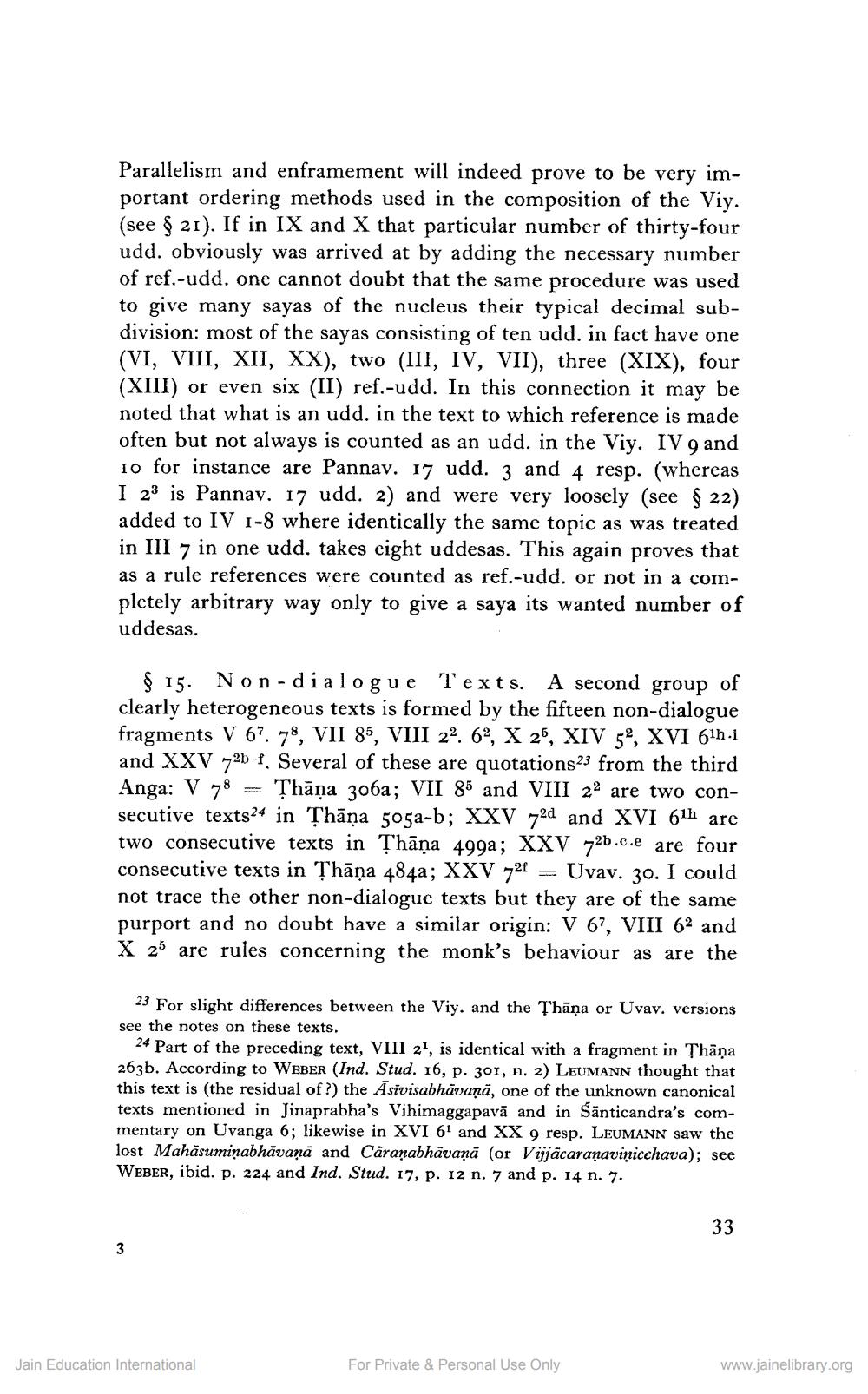________________
Parallelism and enframement will indeed prove to be very important ordering methods used in the composition of the Viy. (see § 21). If in IX and X that particular number of thirty-four udd. obviously was arrived at by adding the necessary number of ref.-udd. one cannot doubt that the same procedure was used to give many sayas of the nucleus their typical decimal subdivision: most of the sayas consisting of ten udd. in fact have one (VI, VIII, XII, XX), two (III, IV, VII), three (XIX), four (XIII) or even six (II) ref.-udd. In this connection it may be noted that what is an udd. in the text to which reference is made often but not always is counted as an udd. in the Viy. IV 9 and 10 for instance are Pannav. 17 udd. 3 and 4 resp. (whereas I 23 is Pannav. 17 udd. 2) and were very loosely (see § 22) added to IV 1-8 where identically the same topic as was treated in III 7 in one udd. takes eight uddesas. This again proves that as a rule references were counted as ref.-udd. or not in a completely arbitrary way only to give a saya its wanted number of uddesas.
§ 15. Non-dialogue Texts. A second group of clearly heterogeneous texts is formed by the fifteen non-dialogue fragments V 67. 78, VII 85, VIII 22. 62, X 25, XIV 5o, XVI 61h.1 and XXV 72b-. Several of these are quotations23 from the third Anga: V 78 = Thāņa 306a; VII 85 and VIII 22 are two consecutive texts24 in Țhāņa 505a-b; XXV 72d and XVI 61h are two consecutive texts in Țhāņa 499a; XXV 726.c.e are four consecutive texts in Țhāņa 484a; XXV 724 = Uvav. 30. I could not trace the other non-dialogue texts but they are of the same purport and no doubt have a similar origin: V 67, VIII 62 and X 25 are rules concerning the monk's behaviour as are the
23 For slight differences between the Viy, and the Thāņa or Uvay. versions see the notes on these texts.
24 Part of the preceding text, VIII 2', is identical with a fragment in Thāņa 263b. According to WEBER (Ind. Stud. 16, p. 301, n. 2) LEUMANN thought that this text is (the residual of ?) the Asivisabhāvaņā, one of the unknown canonical texts mentioned in Jinaprabha's Vihimaggapavā and in Sänticandra's commentary on Uvanga 6; likewise in XVI 61 and XX 9 resp. LEUMANN saw the lost Mahäsuminabhāvana and Caranabhāvanā (or Vijjacaranavinicchava); see WEBER, ibid. p. 224 and Ind. Stud. 17, p. 12 n. 7 and p. 14 n. 7.
33
Jain Education International
For Private & Personal Use Only
www.jainelibrary.org




